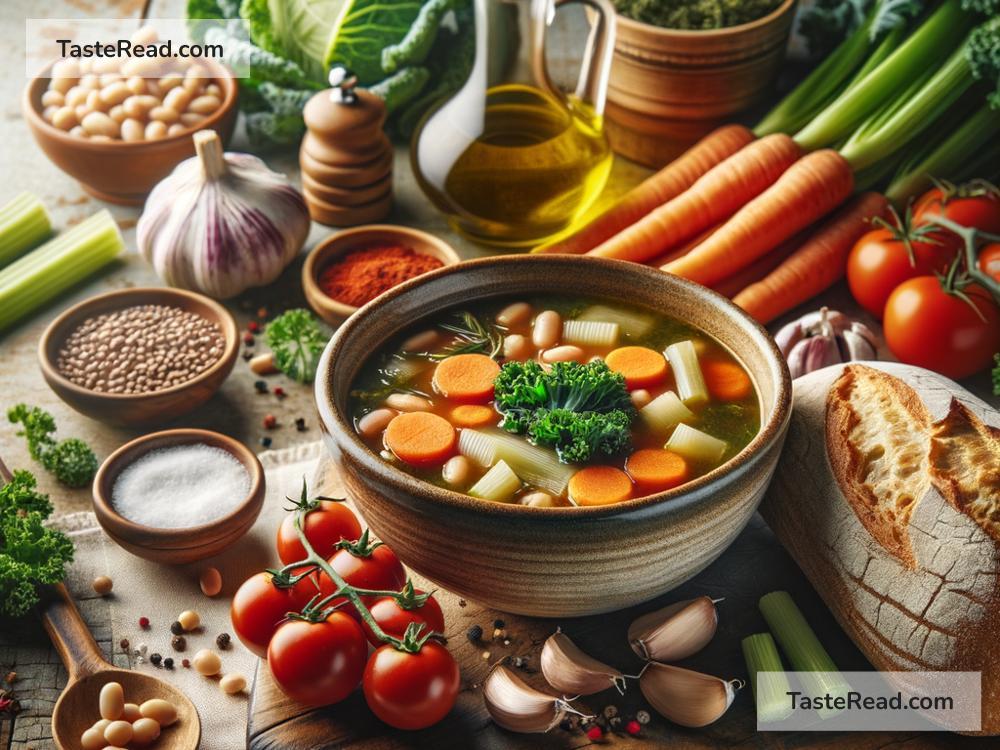How to Create a Rustic Italian Ribollita Soup from Scratch
Ribollita, a humble yet flavorful Italian soup, is a heartwarming dish that has been passed down through generations. Originating from Tuscany, this rustic soup was traditionally made by peasants using leftover bread, vegetables, and beans. Its name, “ribollita,” literally means “reboiled,” referring to how it tastes even better the next day after reheating. Filled with simple, wholesome ingredients, it’s a comforting bowl of goodness that’s perfect for chilly days. In this blog, we’ll walk you through how to make ribollita soup from scratch with easy-to-follow steps.
What Makes Ribollita Unique?
Ribollita isn’t like other soups you may have tried. It’s thick, hearty, and almost stew-like thanks to the use of stale bread to soak up the broth. Unlike fancy dishes loaded with hard-to-find ingredients, ribollita celebrates simplicity. It’s a “no waste” dish, originally designed to stretch ingredients and make the most out of leftovers. The base includes vegetables, beans, olive oil, and day-old bread — classic staples in Italian kitchens.
Ingredients You’ll Need
Here’s a list of ingredients you’ll need to make ribollita soup from scratch. Feel free to tweak the recipe to suit your taste or use what you have at home.
Vegetables:
- 1 onion, finely chopped
- 2 carrots, diced
- 2 celery stalks, diced
- 2 garlic cloves, minced
- 2 cups of chopped kale or Swiss chard
- 1 cup of shredded cabbage
- 1 cup of diced tomatoes (fresh or canned)
Other Ingredients:
- 1 can (15 oz) of cannellini beans, drained and rinsed (or you can cook dried beans)
- 6 cups of vegetable broth (or chicken broth for a richer flavor)
- 2 cups of stale bread, torn into chunks
- 3 tablespoons of olive oil
- Salt and pepper, to taste
- Fresh thyme or rosemary, for added flavor (optional)
- Grated Parmesan cheese, for topping (optional)
Step-by-Step Instructions
Follow these simple steps to make your ribollita soup:
Step 1: Prepare Your Ingredients
Before you start cooking, make sure all your vegetables are chopped, and your stale bread is torn into chunks. If your bread isn’t stale yet, you can lightly toast it in the oven for a few minutes to dry it out.
Step 2: Sauté the Vegetables
In a large pot, heat the olive oil over medium heat. Add the chopped onion, carrots, celery, and garlic. Stir everything together and sauté for about 5 minutes until the vegetables start to soften. The aroma of garlic and onions will fill your kitchen — yum!
Step 3: Add the Leafy Greens and Cabbage
Next, throw in the kale (or Swiss chard) and cabbage. Stir the vegetables frequently as they cook down. This step helps build the soup’s hearty texture.
Step 4: Incorporate the Tomatoes and Beans
Add the diced tomatoes and cannellini beans to the pot. Stir well, ensuring all the vegetables and beans are combined.
Step 5: Pour in the Broth
Pour in the vegetable broth (or chicken broth) and stir everything together. Bring the mixture to a gentle boil, then reduce the heat to a low simmer. Season with salt, pepper, and your optional herbs of choice, such as thyme or rosemary. Let the soup simmer uncovered for 25 to 30 minutes. This allows all the flavors to meld together beautifully.
Step 6: Add the Bread
Once the soup has simmered, add the chunks of stale bread directly into the pot. Stir the soup well, letting the bread absorb the liquid. The soup will thicken as the bread integrates into the broth, transforming it into ribollita’s signature texture.
Step 7: Adjust and Serve
Taste the soup and adjust the seasoning as needed. Ladle the ribollita into bowls and drizzle a little olive oil on top for extra richness. For a finishing touch, sprinkle grated Parmesan cheese if you like. Serve the soup hot and enjoy!
Pro Tip: Save Some for Tomorrow
Ribollita is famous for tasting even better the next day. If you have leftovers, store them in the fridge and reheat them on the stove. The flavors deepen overnight, making tomorrow’s meal an absolute treat.
Why Ribollita Is Perfect for Any Occasion
Ribollita is more than just soup; it’s an experience. Its rustic charm makes it fitting for a cozy family dinner or a hearty lunch with friends. It’s also a fantastic way to use up extra vegetables or day-old bread that you might otherwise throw away. Plus, it’s budget-friendly and packed with nutrients!
Conclusion
Making ribollita soup from scratch is surprisingly simple. With a handful of fresh vegetables, hearty beans, and stale bread, you can create a dish that’s healthy, comforting, and deeply satisfying. This classic Italian recipe reminds us that sometimes, the simplest meals are the most memorable.
So next time you’re craving something warm and wholesome, give ribollita a try. Gather your ingredients, invite a little Italian tradition into your kitchen, and enjoy the magic of rustic cooking. Buon appetito!


